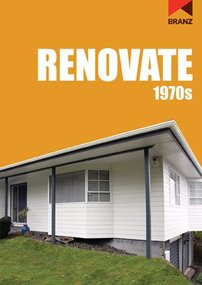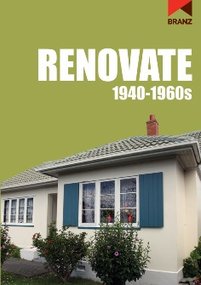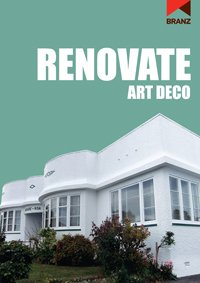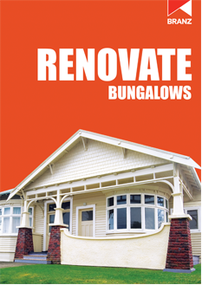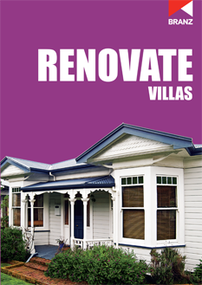Renovate: 1970s
Over 279,000 houses were built in New Zealand in the 1970s, a time of expanding suburban development. Architectural styles developed during the 1950s and 1960s influenced mass housing, and a wide range of new materials was used. Split-level homes became common on sloping sites, and many houses included garaging for two cars, with internal access. Architect-designed houses introduced different window styles and rooflines as well as new linings and claddings.
Many houses from this era are little changed since construction. Typical renovation work includes updating kitchens and bathrooms and making improvements to energy efficiency through retrofitting thermal insulation and installing modern space heating systems.
This technical resource covers:
- exactly what defines 1970s style
- how these houses were constructed and with what materials
- modifications they may have had in the decades since they were built
- typical problems and suggested remedies.
This book also takes you through the issue of getting a consent for renovation work, looking at compliance paths and Alternative Solutions.
Renovate: 1940-1960s
Through the 1940s, around 28% of new domestic building work was government-funded state housing. This figure fell to below 10% during the 1960s. This book covers both state and private housing in an era of considerable growth - 262,000 houses were built in the 1960s.
Early state houses may be plain, but they are regarded today as solidly constructed homes that are ideal for renovation. Architect-designed homes of the period introduced many lifestyle features still popular today, such as larger areas of glazing, good indoor/outdoor flow and open-plan layouts.
This technical resource covers:
- exactly what defines 1940-1960s style
- how these houses were constructed and with what materials
- typical modifications they have had in the decades since they were built
- typical problems and suggested remedies.
This book also works through the issue of getting a consent for renovation work, looking at compliance paths and Alternative Solutions. Very brief examples show compliance paths that could be used for renovations such as adding a first floor addition, adding a double-glazed window where there is currently no window and adding an extension to a stucco house.
Renovate: Art deco
The art deco house of the 1930s was a dramatic change to the earlier villa and bungalow. A flat roof, stucco cladding, rounded corners and reduced decoration all contributed to art deco's distinctive style.
These houses are often bought for their style rather than performance. Their stucco cladding and very low-pitched roofs often had weathertightness problems, and without renovation, art deco houses can be cold to live in. Careful renovation can retain the popular style while improving performance and comfort.
This book covers:
- what defines art deco style
- how these houses were constructed, and with what materials
- typical modifications they have had in the decades since they were built
- problems that may be encountered and suggested remedies
- how to get a consent for renovation work, looking at compliance paths and Alternative Solutions
- project and construction planning.
Renovate: Bungalows
Bungalows are the archetypal house of 1920s New Zealand. Builders and architects took ideas from the United States, Canada, India and even Japan and added their own features to create this popular and enduring style. The style is distinctive, with a deep porch, exposed rafter eaves, extended bargeboards and oriel windows. Many bungalows remain largely in their original form, and they are frequently subjects for renovation.
This technical resource looks at:
- what defines a bungalow style
- how they were constructed and with what materials
- the typical modifications they have had in the years since they were built
- typical problems and suggested remedies
- how to get a consent for renovation work, looking at compliance paths and Alternative Solutions
- project and construction planning.
Renovate: Villas
Many of the country's 85,000 villas, built before World War 1, have already been upgraded and renovated to some extent. In their original state, they are typically cold in winter and draughty, their spaces have a poor relationship to sun and site and their service areas such as bathrooms are not well related to other rooms.
This book is well illustrated with crystal clear drawings showing typical construction methods for framing, roofing, windows and interior building elements. The workings of double hung sash windows alone are shown in six drawings and two photographs.
Typical building materials and construction methods, including match lining, lath and plaster, pressed metal and moulded timbers are explained.
Common problems are outlined, with options given on the appropriate repair or renovation.
